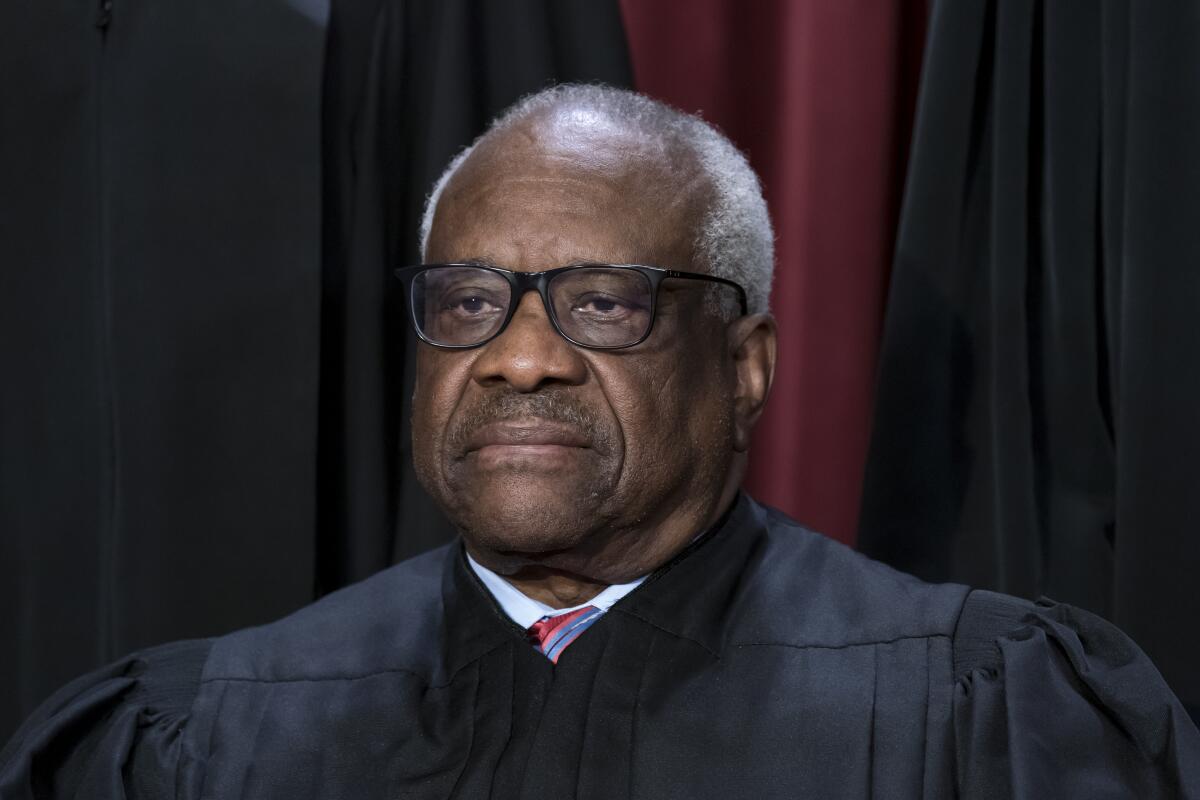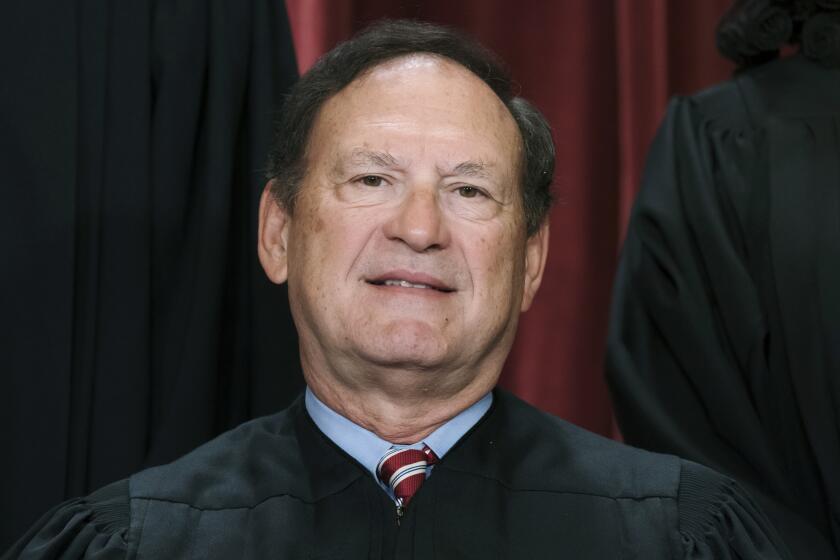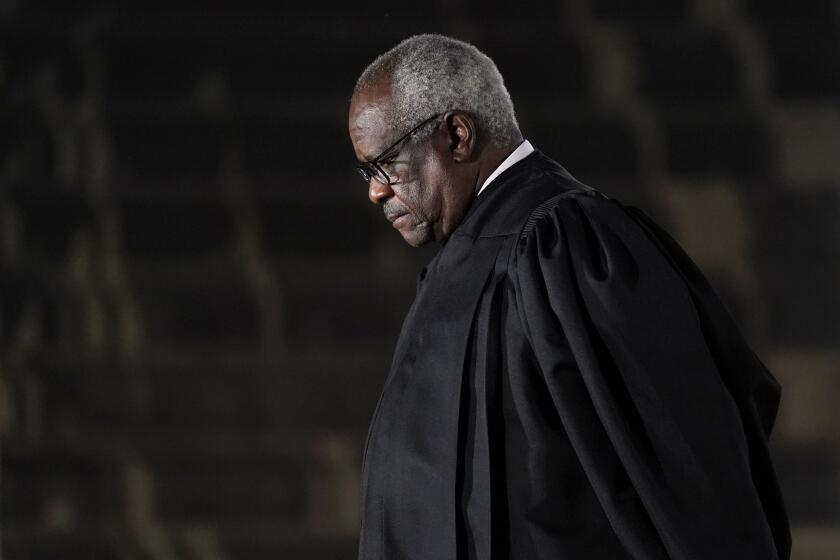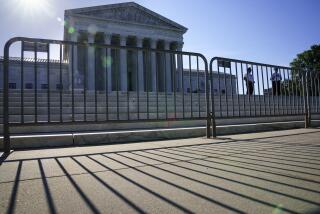Opinion: The Supreme Court finally has a code of ethics, but it has a fatal flaw

Although it is welcome and overdue that the Supreme Court finally adopted an ethics code for its justices on Monday, the approach is seriously flawed in that it includes no enforcement mechanism. Instead it continues to leave it to each justice to decide whether to be recused in a particular case.
Until Monday, every judge in the country — state and federal — was bound by an ethics code, except for the most important jurists: United States Supreme Court justices. Recent revelations of serious ethical lapses by several justices, most notably Clarence Thomas and Samuel Alito, highlighted this absence.
The Supreme Court’s approval rating is plummeting and Alito is a one-man show for why — partisan, blind to ethics problems and even flat-out wrong on the Constitution.
The court has its lowest public approval ratings in history, and while there are certainly many causes for this, the absence of an ethics code surely has contributed to the loss of legitimacy. This was a self-inflicted wound. There was no reason the justices could not adopt the same code of ethics that all other judges have been bound to follow.
And on Monday, the Supreme Court finally set that same bar for its members. With little fanfare, it released a “Code of Conduct for Justices of the Supreme Court of the United States,” signed by all nine justices. This was accompanied by a brief statement of the court explaining that the absence of a code “has led in recent years to a misunderstanding that the Justices of this Court, unlike all other jurists in this country, regard themselves as unrestricted by any ethics rules.” The court said that to “dispel this misunderstanding, we are issuing this Code.”
A new ProPublica report reveals the jurist’s pattern of secretly accepting luxury private jet and yacht travel from a cadre of conservative billionaire donors.
The code itself is unremarkable. It is based on the American Bar Association’s Model Code of Judicial Conduct, which is used throughout the country. In structure and in content it is largely the same. Indeed, all that’s remarkable is how long the court delayed taking this easy and obvious step — and how much pressure was required before the court acquiesced.
But there is a crucial problem with what was released on Monday. It continues to defer to each justice about whether he or she should be disqualified from hearing a particular case. There is no indication of any change in this disturbing practice.
Saying no to gifts and offers isn’t that hard, especially when your job and an institution’s credibility is on the line.
A commentary from the court that accompanies the new code even stresses the harms when a justice recuses, because no other judge can substitute for the absent member. But this wrongly assumes that having nine justices is more important than avoiding a bench tainted by ethical improprieties.
There are already many instances when the court functions without all nine justices, such as when one is ill or when there is a vacancy that has not been filled. After Justice Antonin Scalia died in February 2016, there were only eight justices for the next 15 months because of the Senate’s refusal to consider President Obama’s nomination of Merrick Garland. Having eight justices is not ideal, because of the danger of ties and leaving issues unresolved. But avoiding ethical clouds is more important.
No person should be a judge of himself or herself. There must be a mechanism to determine when a justice should be recused that does not leave it entirely up to that individual. The documented ethical lapses in recent years certainly provide a basis for questioning whether justices are sufficiently sensitive to these issues.
There are many different approaches to this that could work. My colleague Jeremy Fogel, a former federal judge, proposed to the Senate Judiciary Committee in May that the chief justice appoint three retired federal court of appeals judges to decide recusal issues. There are many superb retired judges who could be appointed to perform this function. An alternative would be to have recusal issues for a justice decided by the other eight justices. The danger with this approach is that the justices might develop a norm of deferring to one another and refusing to meaningfully enforce the code of conduct.
However it is structured, there must be an enforcement mechanism for the ethical code to have meaning. “Trust us” is never an adequate answer, especially when dealing with matters of ethics. The court’s legitimacy, and the very foundation of the rule of law, demand that the court take the next step and provide a way of enforcing the rules that it has adopted.
Erwin Chemerinsky is a contributing writer to Opinion and the dean of the UC Berkeley School of Law. His latest book is “Worse Than Nothing: The Dangerous Fallacy of Originalism.”
More to Read
A cure for the common opinion
Get thought-provoking perspectives with our weekly newsletter.
You may occasionally receive promotional content from the Los Angeles Times.













